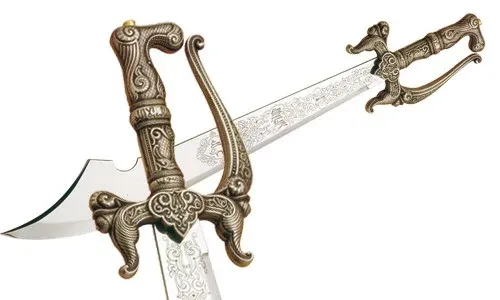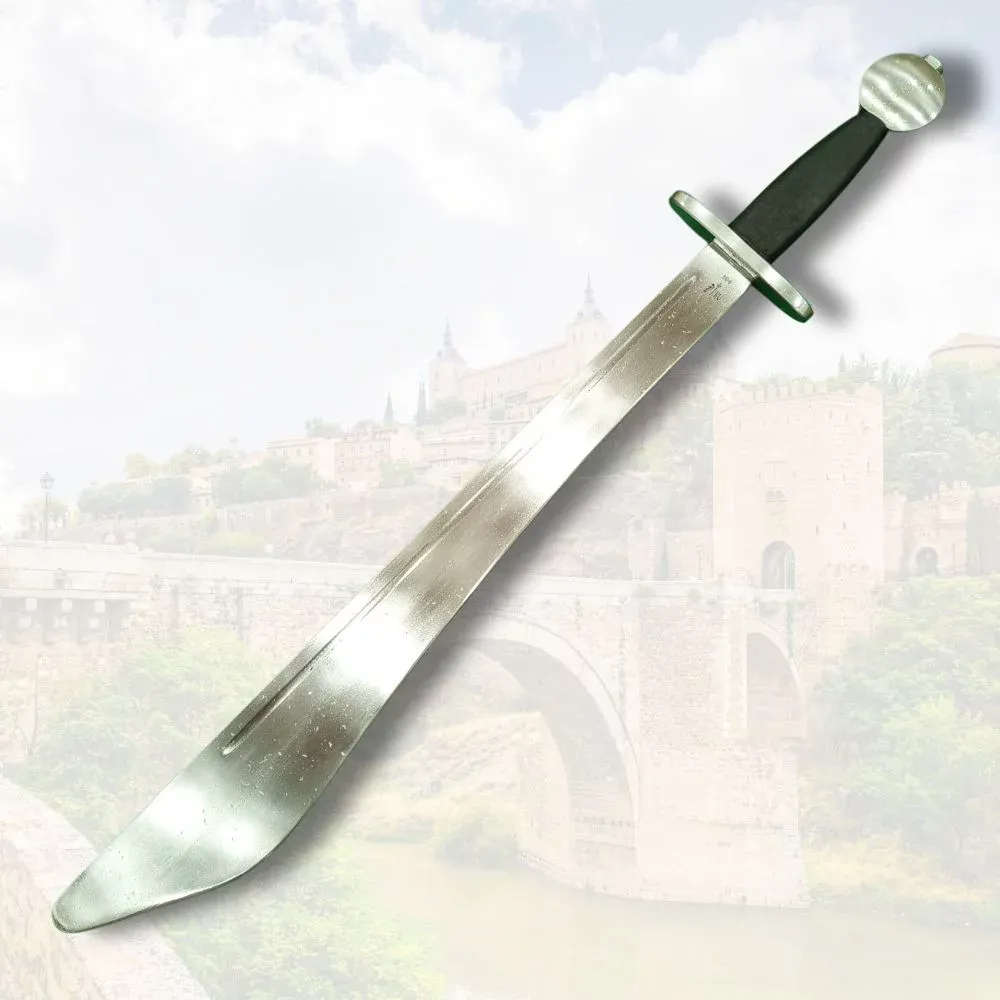Shopping Cart
There are no more items in your cart
Scimitar Vs. Broadsword
In the vast history of medieval weapons, two terms often generate some confusion: *alfanje* and *bracamarte*. Although both are curved single-edged blades, they have significant differences in their origins, design, and use. This article examines these fascinating weapons, exploring their key similarities and differences.
Origins of the Term
Alfanje
- Origin: The word "alfanje" has its roots in the Hispano-Arabic "al-janyar," which translates as "the dagger."
- History: This sword was widely used in the Iberian Peninsula as well as in parts of the Mediterranean and Italy during the Middle Ages up to the Renaissance. In Old Castilian, it was also known as "terciado."
Bracamarte
- Origin: The term "bracamarte" derives from French "braquemart," which translates directly to German "Großes Messer" (big knife).
- History: Its use was predominant during the Middle Ages, especially in the Castilian-Leonese kingdom. In English, it is known as a "falchion."

Characteristics
Alfanje
- Description: It is a sword with a wide, curved blade with a single edge, although it may have a false edge on its last third. It is shorter and heavier than Eastern sabers, with a characteristic design possibly inherited from the longsax or falchion.
- Use: Ideal for slashing, it was especially popular in the major Italian city-states like Venice, famous for their refined finishes exported worldwide.
Bracamarte
- Description: It is a single-edged sword, whose spine often features a false edge on its last third. Its blade is curved and widens as it approaches the tip.
- Use: Widely used in the Castilian-Leonese kingdom, this weapon is a natural development of the large cutting blades such as the European seax or scramasax.

Similarities and Differences
Both instruments stand out for their curved blade and unique edge, ideal for slashing and precise strikes. However, they present notable differences:Similarities
- Both feature *curved blades* and *unique edges*, making them effective in close combat.
Differences
- Origin: While the alfanje has roots in Hispano-Arabic, the bracamarte comes from French and German.
- Design: The alfanje is shorter and heavier compared to Eastern sabers, while the bracamarte is more curved and wider toward the tip.
- Use: The alfanje was widely used in the Mediterranean, while the bracamarte was more common in the Castilian-Leonese kingdom.
| Characteristic | Alfanje | Bracamarte |
|---|---|---|
| Origin | Hispano-Arabic | French/German |
| Blade | Wide and curved | Curved and wide toward the tip |
| Use | Mediterranean Region | Castilian-Leonese Kingdom |
Alfanjess and bracamartes, although they share some similarities in their design and use, are distinct weapons that reflect the needs and characteristics of their regions of origin. Discovering their differences not only helps us better understand these weapons but also offers a window into the rich and varied history of medieval combat techniques.
















